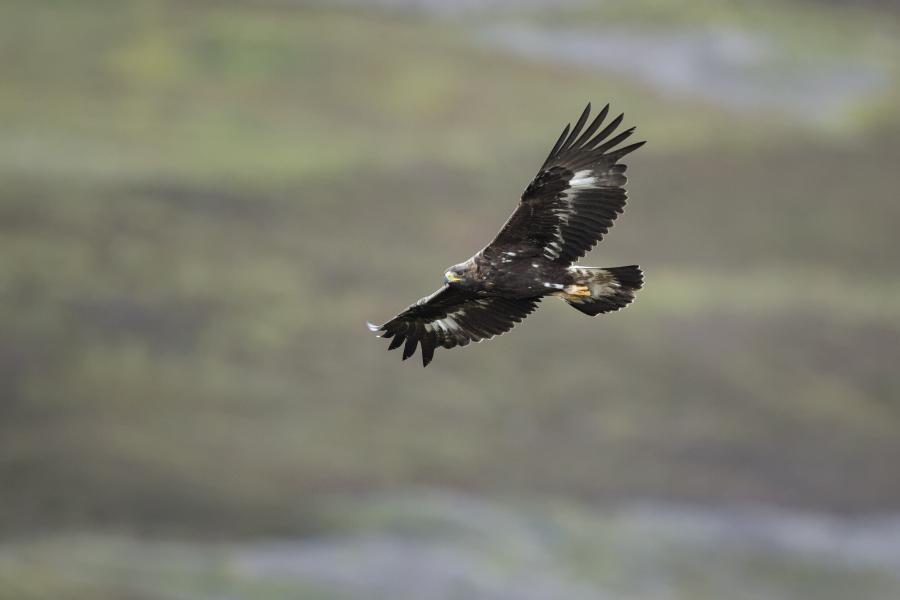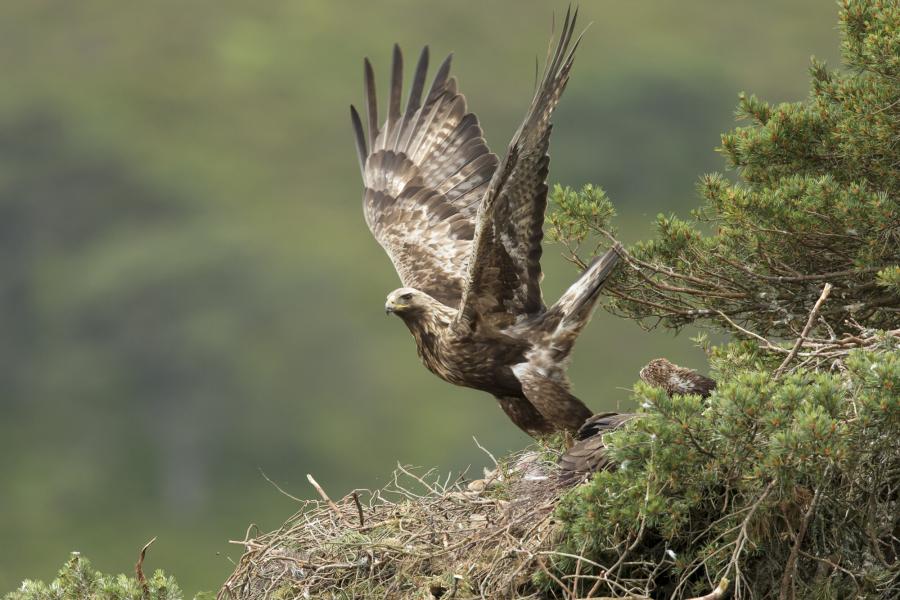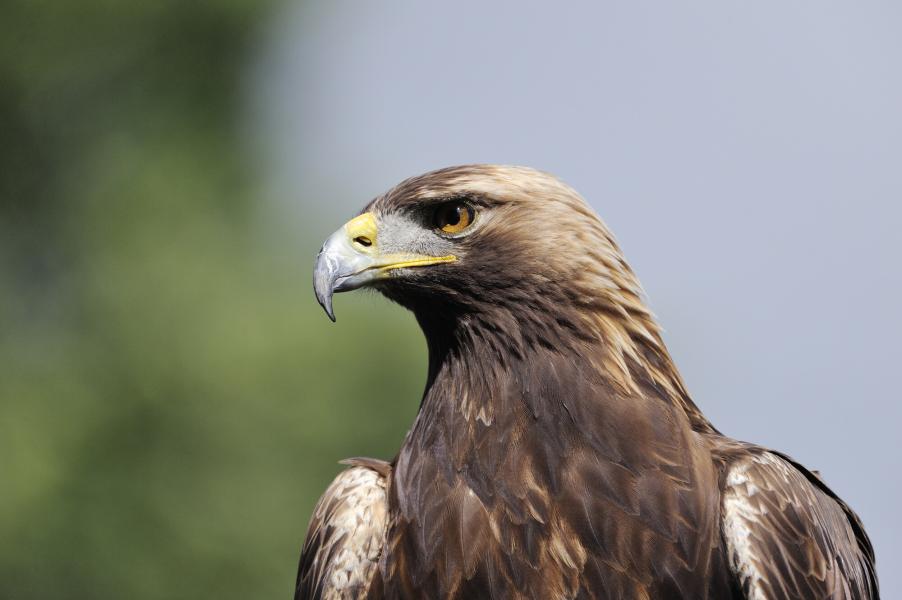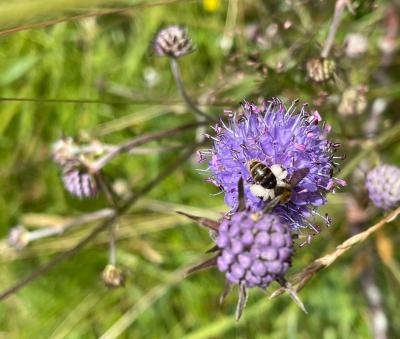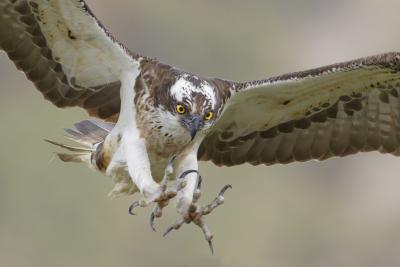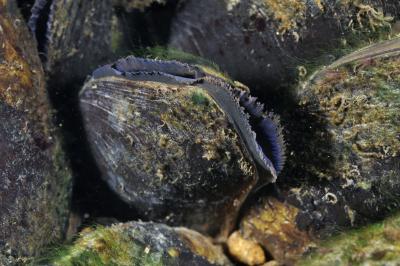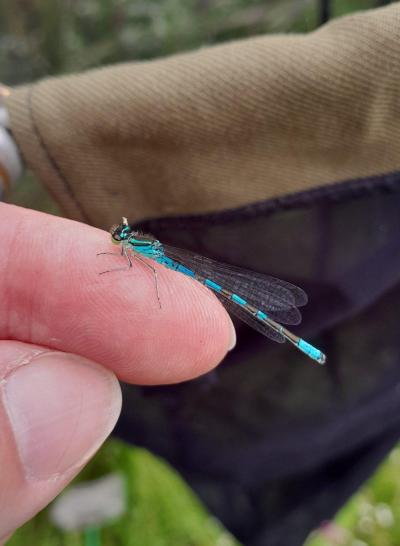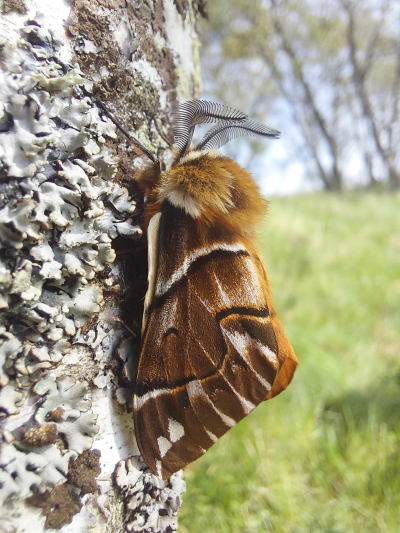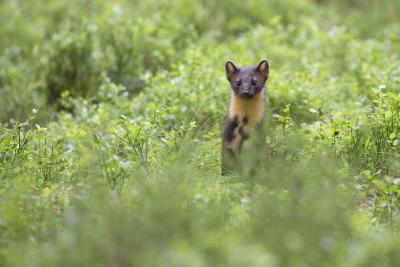Golden eagle
Aquila chrysaetos
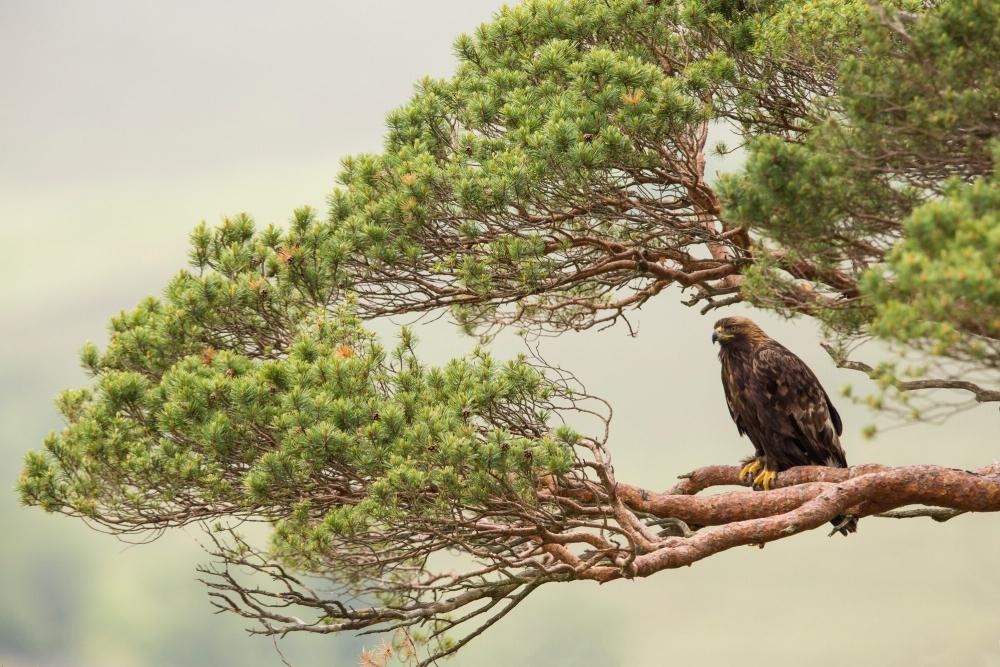
Golden eagles may not be the biggest bird of prey in the UK (that title belongs to the white-tailed eagle), but a sighting remains an awe-inspiring experience. Once widespread throughout the UK, this raptor is now confined to Scotland.
Factsheet
Weight: Average male 3.7kg; average female 5.2kg
Lifespan: 23 years
Best time to spot: Year-round
With its wingspan of 2 to 2.2m, prominent black beak, feathery legs, yellow feet, long tail, and pronounced six-fingered wingtips, the golden eagle is an iconic bird.
Adults are mainly brown, with lighter feathers on the head and neck that look golden in the sunlight. Young eagles, known as juveniles, are darker, with a white base to the tail and white patches in the underwing. Females are bigger and heavier than males, but their plumage is identical.
Golden eagles tend to soar using air currents rather than flapping their wings. While gliding along mountaintops, they hold their wings in a shallow ‘V’.
Golden eagles hold massive home ranges. Once they reach the breeding age of four or five, they mate for life. Each pair can cover up to around 90 square kilometres. Within the boundaries of their chosen home range, they will build a selection of nests - known as eyries - on crags or in trees, adding branches, twigs and heather as the years progress.
Did you know?
Golden eagles may not be the biggest bird of prey in the UK (that title belongs to the white-tailed eagle), but a sighting remains an awe-inspiring experience. Once widespread throughout the UK, this raptor is now confined to Scotland.
Factsheet
Weight: Average male 3.7kg; average female 5.2kg
Lifespan: 23 years
Best time to spot: Year-round
With its wingspan of 2 to 2.2m, prominent black beak, feathery legs, yellow feet, long tail, and pronounced six-fingered wingtips, the golden eagle is an iconic bird.
Adults are mainly brown, with lighter feathers on the head and neck that look golden in the sunlight. Young eagles, known as juveniles, are darker, with a white base to the tail and white patches in the underwing. Females are bigger and heavier than males, but their plumage is identical.
Golden eagles tend to soar using air currents rather than flapping their wings. While gliding along mountaintops, they hold their wings in a shallow ‘V’.
Golden eagles hold massive home ranges. Once they reach the breeding age of four or five, they mate for life. Each pair can cover up to around 90 square kilometres. Within the boundaries of their chosen home range, they will build a selection of nests - known as eyries - on crags or in trees, adding branches, twigs and heather as the years progress.
Did you know?
An apex predator, safe at the top of the food chain, the golden eagle is happy to dine on both freshly killed meat and other creatures’ leftovers. Their eyesight, agility and long, strong talons mean they are epic hunters. In the Cairngorms National Park, their favourite food tends to be medium-sized birds such as grouse and ptarmigan, plus hares and rabbits. If these aren’t available, they will prey on other mammals, including foxes and mustelids (like weasels and pine marten).
These birds may look fierce, but the shy golden eagle is most at home in wild, scarcely populated open upland and mountainous habitats. Because of this, most of the Cairngorms mountain range is designated an area of European importance for golden eagles, and the Highlands is the species’ stronghold. A 2023 survey identified at least 12 breeding pairs across the Cairngorms National Park. A small number of golden eagles also live in the south of Scotland.
Research suggests that eagle egg laying happens in spring, between early March and mid-April. Most times, females will lay two eggs, though between one and three is possible. Incubation lasts 41 to 45 days and is usually done by the female, who is relieved for short periods by the male during daylight hours.
Once hatched, the chicks will spend 70 to 80 days in the nest being fed by their parents. They remain close by for a few weeks (sometimes months), before soaring away to live a nomadic life until it’s their turn to breed.





